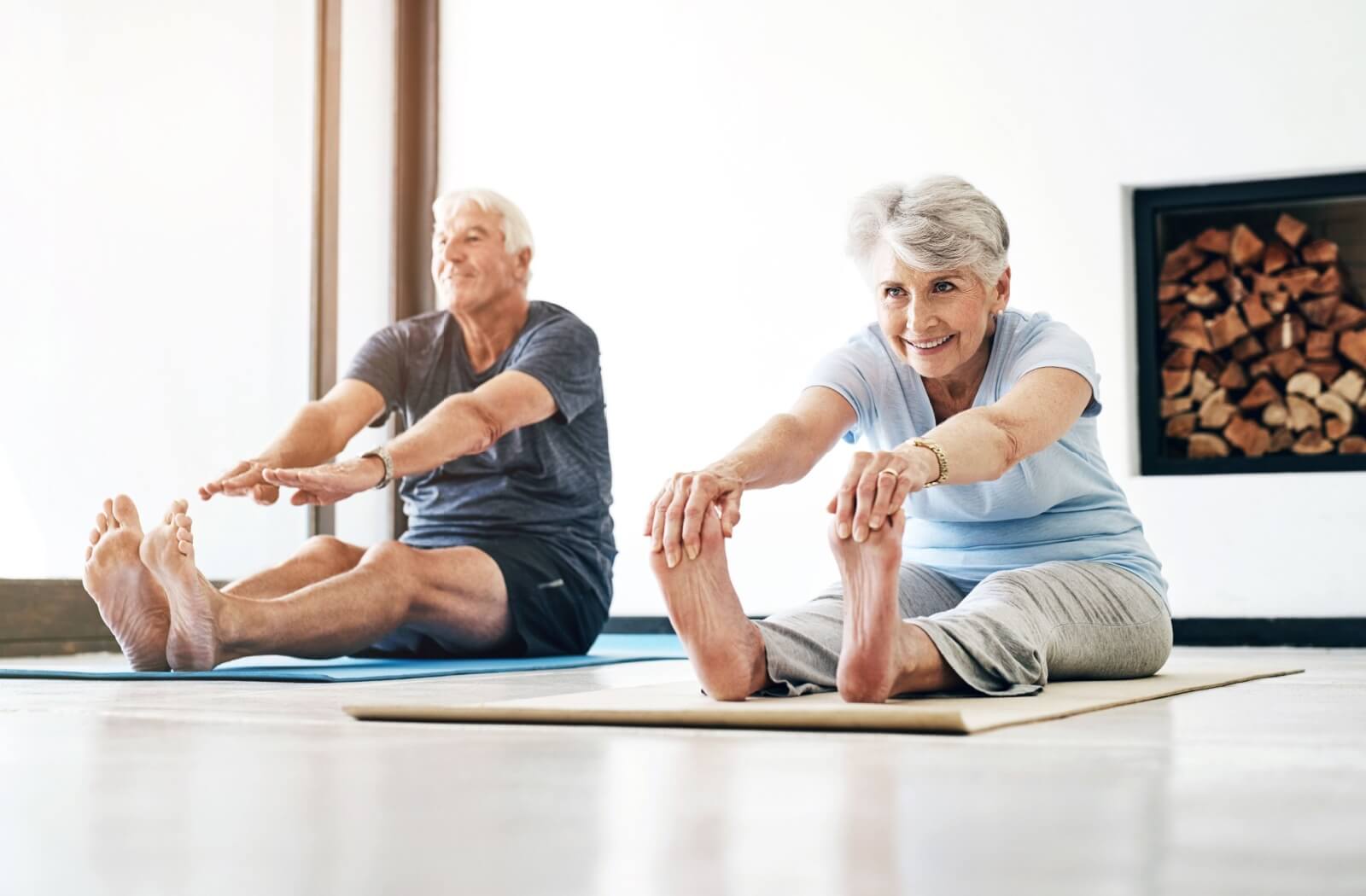Exercises for Seniors With Limited Mobility
- Posted on
- By Mira Vie Senior Living

Mobility challenges are often closely linked to aging. They can make everyday activities more difficult. Our older loved ones deserve to stay active and independent, so regular exercise becomes more critical with age. It’s the key to an active lifestyle.
Maintaining physical activity doesn’t need to involve intense workouts. With the right exercises and a focus on safety, seniors can stay active while improving their overall well-being. Through a mix of balance exercises, flexibility training, and resistance workouts, older adults can work towards a healthier life—even with limited mobility.
Why Exercise Matters for Seniors
Exercise is a crucial part of good health, regardless of age. For seniors, staying active helps in plenty of ways. Exercise helps older adults:
- Improve circulation and heart health.
- Help maintain muscle mass and physical strength.
- Enhance flexibility for better movement and injury prevention.
- Boost mental health by reducing stress and anxiety.
- Stay independent by improving balance and mobility.
Taking small steps to add movement into daily life is an excellent start. It builds a foundation for a healthier lifestyle.
How Much Should Seniors Exercise?
Physical activity is important for seniors with limited mobility. Ideally, older adults should aim for:
- 150 minutes of moderately intensive exercise a week, or
- 75 minutes of high-intensity exercise every week
Simple activities, like walking and jogging, are great options for moderate-intensity exercises. Stretching and flexibility training, along with resistance training using light weights or resistance bands, can also be worked into daily routines.
Alongside these guidelines, seniors should regularly perform balance exercises and strength training. This routine helps boost the muscles needed to stay independent every day.
Best Exercises for Seniors with Limited Mobility
Finding ways to exercise with limited mobility involves choosing the right type of exercise. Breaking this routine down into several categories helps, making it easier and more attainable—especially for older adults beginning an exercise routine for the first time.
Encourage your loved one to focus on 3 key categories:
- Cardiovascular health
- Flexibility
- Strength training
This way, it’s easy to work towards better health regularly.
Cardiovascular Exercises for Limited Mobility
Cardiovascular exercise raises the heart rate, keeping the heart and lungs healthy. Seniors with limited mobility may think this type of activity is out of reach, but plenty of gentle, effective options are available.
Seated workouts are a great way to engage the upper body and cardiovascular system. You can start out by trying:
- Seated marching, which mimics walking while sitting, helping to elevate the heart rate.
- Arm exercises with light weights or resistance bands to strengthen muscles and improve circulation.
- Chair aerobics, incorporating rhythmic movements to stimulate the cardiovascular system.
- Seated ball exercises, such as bouncing a lightweight ball, to enhance coordination and keep the heart active.
Water exercises can be particularly helpful. The water takes some weight off the joints, adding mild resistance to their routine.
Flexibility Exercises for Limited Mobility
Flexibility is important for independence. Stretching regularly helps reduce stiffness, promote mobility, and prevent injury. Seniors can focus on simple stretches that can be done while seated or standing for stability.
To get started, recommend these seated flexibility exercises:
- Wrist and ankle rolls
- Seated arm raises
- Knee marches
- Seated torso twists
- Heel slides
These are easy to modify based on your or your loved one’s comfort levels. Gentle stretches performed daily or a few times per week help support movement in the arms, legs, and core. Over time, consistent flexibility exercises can improve their range of motion and help them with their everyday activities.
Strength-Building Exercises for Limited Mobility
Building and maintaining muscle strength is extremely helpful. Exercises don’t need to be harsh or strenuous—there are options for almost every ability level.
Great strength-building tools include:
- Resistance bands
- Light weights
- Bodyweight exercises
For seniors who are comfortable, modified standing or seated bodyweight workouts—like seated leg presses or chair squats—work well. The key is to keep strength exercises gentle and to work slowly to avoid strain.

Tips for Exercising Safely
Safety should always be a priority during physical activity. If you or your loved one deal with mobility challenges, encourage them to start slow. Be careful at all times and listen to your body.
Here are some safety tips to keep in mind:
- Consult a doctor or physical therapist to discuss appropriate exercises.
- Choose low-impact activities that align with current health conditions.
- Warm up before exercise with gentle stretches or light movements.
- Stop immediately if any exercise causes pain or discomfort.
- Focus on proper form and slow, controlled movements.
Preparing correctly is a significant step toward a safer workout.
How Senior Living Can Help
Staying active is a core part of a healthier lifestyle. That’s why our Mira Vie Senior Living communities are proud to help residents progress towards improved fitness. We offer a range of programs, all designed to make exercise more engaging and accessible—just like your loved one deserves. Contact us today to schedule a tour and see for yourself!
Related Articles

Travel Safety Tips for Seniors: Planning a Trip with Peace of Mind
Key Takeaways Plan ahead with your doctor and organize medications before you travel. Pack for